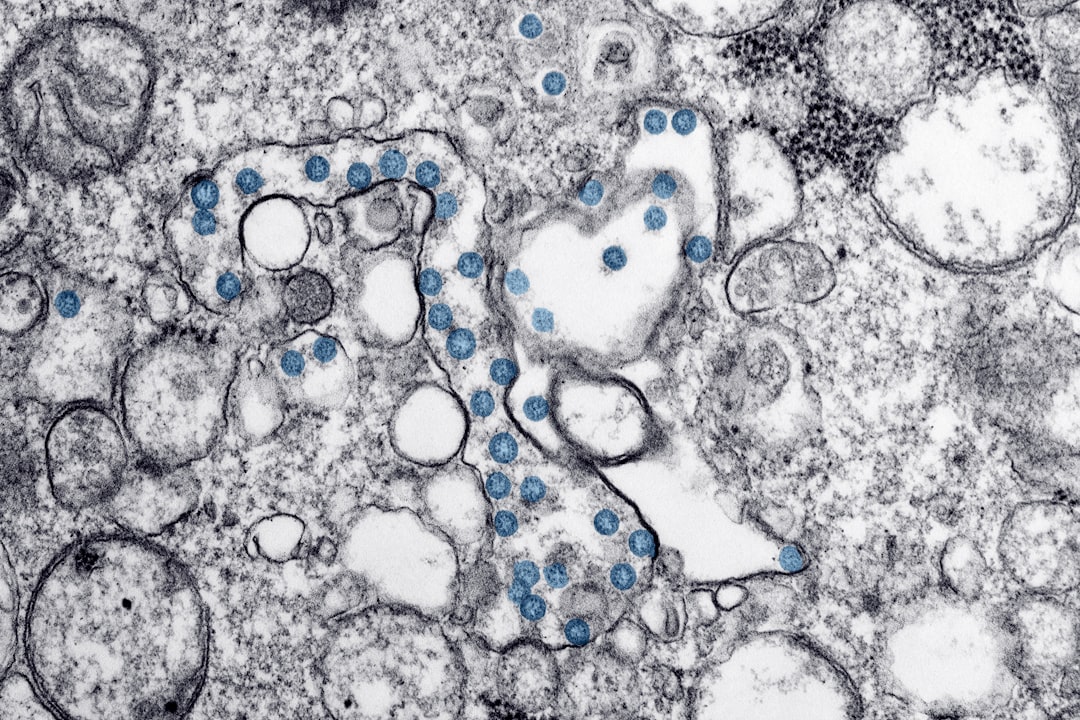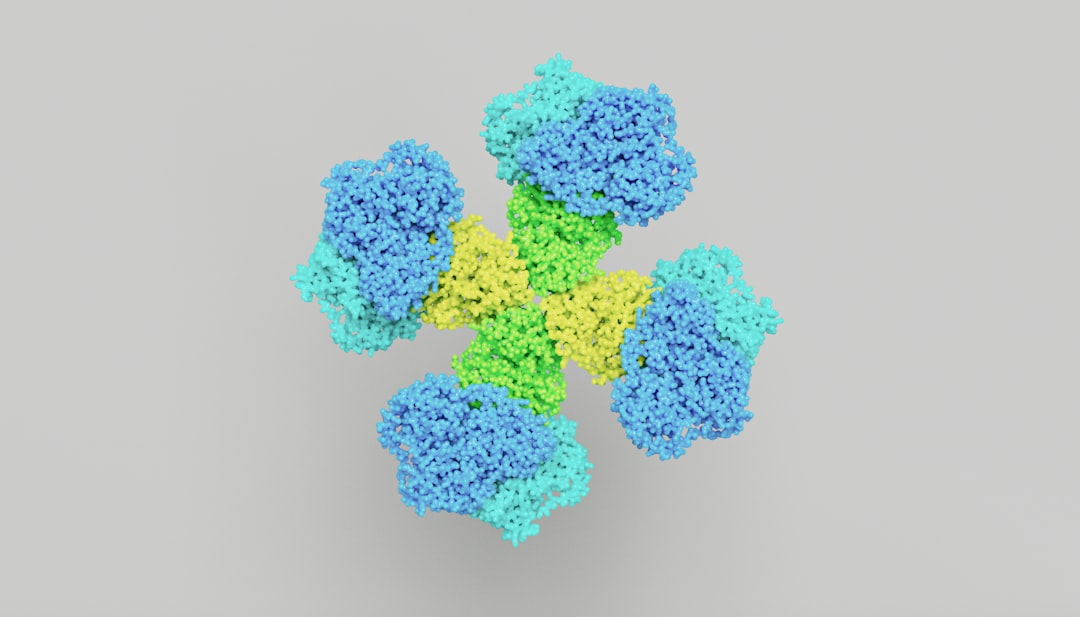1. Slow Virus | Virology Series
It had never occurred to me to ask what a virus is. In this series I want to dissect how we understand viruses, and explore our history with them.
Introduction
I am not a virologist. But, recent events have motivated me to explore the field I thought I understood - at least clinically. I started by reading historical texts on the matter.
One such book is Peter Duesberg’s Inventing the AIDS Virus. Despite what you may think of Duesberg and his AIDS hypothesis, the first couple of chapters of this book is a trove of virology history - and has nothing to do with HIV or AIDS.
It is only appropriate that Duesberg be a source of information on the history of virology, as he played an integral role in it. As a fellow of the first virology lab in the US (UC Berkeley), and working under the first person (Stanley) awarded a Nobel Prize for ‘isolation’ of a virus, he has contributed a great deal to understanding of viral illness - or lack thereof.
The following is based on the ‘discovery’ of the slow virus, summarized from Duesberg’s work.
Shoot the Messenger
Since the isolation of the first virus, tobacco mosaic virus, many harmless viruses have been identified and blamed for human illness.
The drug-induced SMON epidemic of Japan was blamed on viruses
Researchers spent hundreds of years trying to find the microbe that caused Scurvy
…and hell was raised in order to find the microbe that caused Pellagra
This effort was in full swing during the polio epidemic. Researchers on the hunt for new variants of Poliovirus identified harmless passenger viruses - such as Coxsackievirus & Echovirus - which also colonize the GI tract.
Initially, these were classified as orphans - a virus without corresponding disease.
Viral Illness
For a dive into what illness is and how we define it, check out this prior post:
Whatever your sentiment towards the contemporary model of viral illness, it is important to consider the intellectual framework that virologists of the 20th century worked with.
One component of this framework is as follows:
For any virus which causes disease, the illness will strike the victim soon after infection.
When a microbe infects a naive host, it will cause illness within days or weeks - if indeed it is a disease-causing microbe. In order to cause disease, the virus needs to replicate into numbers high enough to disrupt cellular and organ function.
Without tissue/organ dysfunction, there is no disease.
The critical factor here is how quickly the virus can replicate. If it is too slow, the immune system will have enough time to mount a response and neutralize the invader. By exponential growth the virus has a chance of overwhelming the body and causing illness.
This rate of growth is referred to as generation time.
For human illness, the generation time is on the scale of hours to days.

Original Sin
The fundamental problem is that once a virus is dormant, a healthy and intact immune system will not allow the virus to multiply to such an extent that it would threaten the host. It is in equilibrium with the host. For the virus to reactivate, first the immune system must be perturbed in some detrimental way.
Thus, the cause of illness is that which weakened immunity.
In the case of Hepatitis, which often occurs secondary to alcohol abuse or non-alcoholic fatty liver disease (NAFLD - associated with consumption of fructose) - hepatitis virus grows abundantly and can easily be detected by molecular testing.
Is the culprit the hepatitis virus or the destruction of healthy liver & immunity as a result of lifestyle choices?
Another example is Herpes - which lays dormant and breaks out periodically as the immune system fluctuates seasonally.
In both cases, the weakened health of the host is the culprit - the virus is merely a manifestation. Ashes, not the spark.
To blame a disease on a virus which does not meet the above requirement for causing illness, one must invent a new property that allows the virus to violate this framework.
Slow virus is the original sin.
A ‘slow virus’ is credited with the natural ability to cause disease years after infection - termed a latent period - regardless of the state of immunity.
Daniel Carleton Gajdusek
Dr. Gajdusek was a virologist and pediatrician at the NIH for decades. In 1957, by sponsorship from the National Foundation for Infantile Paralysis, Gajdusek took a trip to New Guinea where he was introduced to kuru disease.
Kuru is said to have only affected one group of people (Fore tribe) in New Guinea. Kuru derives from the Fore word kuria - to shake. Before Gajdusek, no outsider had ever described the disease.
Gajdusek reported that natives of Fore would perform ritual cannibalization of their relatives, including the consumption of their brains. He decided that the causative agent of kuru was transmitted by consuming brains.
He looked high and low for the virus that would be responsible.
Unfortunately, he could not find any signs of infection:
No fever
No inflammation
Not even changes in the cerebrospinal fluid of those who had ‘kuru’
Weirdly, even those with a weaker immunity had no greater risk of catching this ‘infection.’
Upon his return to the US, he was hired by the NIH to study neurologic disease. Simultaneously, a colleague in England was studying scrapie (a similar disease) in sheep. The Brit suggested the possibility of a ‘slow virus’ in the manifestation of disease. Gajdusek ran with it.
In his experiments with chimpanzees, he tried to transmit kuru in every conceivable way. He transfused blood, urine and cerebrospinal fluid from the sick to the chimps. Nothing happened to the chimps.
The chimps did not even catch kuru from eating the brains of the affected people. Weird, considering cannibalism was his claim for transmission to begin with.
In a last ditch effort, Gajdusek made a smoothie from the brains of kuru patients and injected the slurry directly into the brains of the chimps.
Shockingly…some monkeys developed some symptoms.
Who would have thought that directly injecting foreign goop into the brain would result in neurological symptoms? Crazy.
In these monkeys who developed some symptoms, no virus could be found - even under electron microscopy. However, he was convinced that he had found the vector for this virus…which he had not yet isolated.
Departure from Standards
Because Gajdusek could not ‘isolate’ virus in any of the classically accepted methods…he designed a new set of experiments. He just knew this was caused by a virus, so the formality of finding it was…just a formality.
Gajdusek designed a set of experiments in which he would treat the virus-containing solution in various ways. He hoped to glean some characteristics about the virus by attempting to destroy it. For example, what sort of treatment would kill the virus?
Unfortunately, this proved to be yet another setback for Gajdusek. No matter what he did to the solution, it still caused the same kuru-like symptoms when injected into the brains of the chimps. To add insult to injury, he could not identify any foreign genetic material in the kuru-affected brains.
All this lends itself to one obvious conclusion: there was no virus.
True to his pseudo-scientific training, he flipped his findings upside down. Gajdusek concluded that the virus which caused kuru was a new type of super-microbe. Something of an ‘unconventional’ virus.
This new virus acted slowly, since long periods of time elapsed between the act of cannibalism and onset of kuru - years to decades.
In the wake of the Polio epidemic, Gajdusek presented his hypothesis to a generation of scientists falling over themselves to work with these virus-hunters and all the grant funding they attracted. This happens all the time and in many specialties of medicine to this day.
The community was uncritical as he claimed that a similar virus also caused Creutzfeldt-Jakob, Alzheimer’s and other such degenerative diseases.
He was taken seriously…despite having no evidence.
The Legacy
Anthropologist Lyle Steadman investigated Gajdusek’s claims. Steadman spent two years in New Guinea…and often heard tales of cannibalism, but never found any evidence of it having occurred.
Gajdusek claimed that he had actual photographs, but he would not publish them because they ‘so offend the relatives of the people…’
Gajdusek never presented evidence that cannibalism had occurred amongst the Fore people, let alone isolated the viruses that caused the ensuing illness.
Conveniently, Gajdusek claims that both cannibalism and kuru ceased to exist within a few years after his 1957 trip. Yet, Gajdusek has shaped the mental framework of an entire generation of scientists and doctors.
Stupefying as it is revealing, Gajdusek was awarded the 1976 Nobel Prize in Medicine for this work. The NIH promoted Gajdusek to head the lab of CNS studies.
Stage is Set
In the wake of a series of rather unconvincing experiments, and his 1977 paper “Unconventional Viruses and the Origin and Disappearance of Kuru,” Gajdusek was ultimately proven to be wrong.
Kuru is now considered to be a prion disease - caused by misfolded proteins.
Unfortunately for clinical virology, the damage had been done.
The idea of a slow ‘unconventional’ virus that caused illness years-to-decades after infection…without any trace of its existence except via unreliable molecular testing…had made its way into the conscience of the scientific community.
The ensuing mess is too much to dissect now…but rest assured, it is quite the mess.
What Happened to Gajdusek?
Well…
For those interested in how this part of the story played out, check out the documentary by Bosse Lindquist called The Genius and the Boys.
Implications & Further Questions
To recap, a Nobel Prize winning virologist whose work is more slimy than the smoothies he injected into the brains of chimpanzees, set the stage for the evolution of clinical virology.
If decades of viral illness and treatment rest on these assumptions and pseudo-science…what else have we misunderstood?
How many other decorated virologists and doctors are charlatans?
What else in the field of virology & medicine is simply assumed to be true without confirmatory evidence?
As it turns out, the fiat economy that has permeated our society for decades has also infected the noblest of vocations.
The arrogance of man knows no bounds. The potential damage is likewise unlimited.
Follow me on Twitter @RemnantMD and Instagram @remnant.md






in my opinion some viruses exist and cause issues but most of what they say is bullcrap.
im not sure if i published this before on a previous article but its eye opening
and i cant recall the source to thank the writer sadly
let's take a look at history and polio!
1824: Metal workers had suffered for centuries from a paralysis similar to polio caused by the lead and arsenic in the metals they were working with. English scientist John Cooke observed: 'The fumes from these metals, or the receptance of them in solution into the stomach, often causes paralysis.'
1890: Lead arsenate pesticide started to be sprayed in the US up to 12 times every summer to kill codling moth on apple crops.
1892: Polio outbreaks began to occur in Vermont, an apple growing region. In his report the Government Inspector Dr. Charles Caverly noted that parents reported that some children fell ill after eating fruit. He stated that 'infantile paralysis usually occurred in families with more than one child, and as no efforts were made at isolation it was very certain it was non-contagious' (with only one child in the family having been struck).
1907: Calcium arsenate comes into use primarily on cotton crops.
1908: In a Massachusetts town with three cotton mills and apple orchards, 69 children suddenly fell ill with infantile paralysis.
1909: The UK bans apple imports from the States because of heavy lead arsenate residues.
1921: Franklin D. Roosevelt develops polio after swimming in Bay of Fundy, New Brunswick. Toxicity of water may have been due to pollution run-off.
1943: DDT is introduced, a neurotoxic pesticide. Over the next several years it comes into widespread use in American households. For example, wall paper impregnated with DDT was placed in children's bedrooms.
1943: A polio epidemic in the UK town of Broadstairs, Kent is linked to a local dairy where cows were washed down with DDT.
1944: Albert Sabin reports that a major cause of sickness and death of American troops based in the Philippines was poliomyelitis. US military camps there were sprayed daily with DDT to kill mosquitoes. Neighboring Philippine settlements were not affected.
1944: NIH reports that DDT damages the same anterior horn cells that are damaged in infantile paralysis.
1946: Gebhaedt shows polio seasonality correlates with fruit harvest.
1949: Endocrinologist Dr Morton Biskind, a practitioner and medical researcher, found that DDT causes 'lesions in the spinal cord similar to human polio.'
1950: US Public Health Industrial Hygiene Medical Director, J.G. Townsend, notes the similarity between parathion poisoning and polio and believes that some polio might be caused by eating fruits or vegetables with parathion residues.
1951: Dr. Biskind treats his polio patients as poisoning victims, removing toxins from food and environment, especially DDT contaminated milk and butter. Dr. Biskind writes: 'Although young animals are more susceptible to the effects of DDT than adults, so far as the available literature is concerned, it does not appear that the effects of such concentrations on infants and children have even been considered.'
1949-1951: Other doctors report they are having success treating polio with anti toxins used to treat poisoning, dimercaprol and ascorbic acid. Example: Dr. F. R. Klenner reported: 'In the poliomyelitis epidemic in North Carolina in 1948 60 cases of this disease came under our care... The treatment was massive doses of vitamin C every two to four hours. Children up to four years received vitamin C injection intramuscularly... All patients were clinically well after 72 hours.'
1950: Dr. Biskind presents evidence to the US Congress that pesticides were the major cause of polio epidemics. He is joined by Dr. Ralph Scobey who reported he found clear evidence of poisoning when analyzing chemical traces in the blood of polio victims.
Comment: This was a no no. The viral causation theory was not something to be questioned. The careers of prominent virologists and health authorities were threatened. Biskind and Scobey's ideas were subjected to ridicule.
1953: Clothes are moth-proofed by washing them in EQ-53, a formula containing DDT.
1953: Dr. Biskind writes: 'It was known by 1945 that DDT was stored in the body fat of mammals and appears in their milk... yet far from admitting a causal relationship between DDT and polio that is so obvious, which in any other field of biology would be instantly accepted, virtually the entire apparatus of communication, lay and scientific alike, has been devoted to denying, concealing, suppressing, distorting and attempts to convert into its opposite this overwhelming evidence. Libel, slander, and economic boycott have not been overlooked in this campaign.'
1954: Legislation recognizing the dangers of persistent pesticides is enacted, and a phase out of DDT in the US accelerates along with a shift of sales of DDT to third world countries.
(Note that DDT is phased out at the same time as widespread polio vaccinations begin. Saying that, polio cases sky rocket only in communities that accept the polio vaccine, as the polio vaccine is laced with heavy metals and other toxins, so the paralysis narrative starts all over again. As the polio vaccines cause huge spikes in polio, the misinformed public demand more polio vaccine and the cycle spirals skyward exponentially)
1956: the American Medical Association mandated that all licensed medical doctors could no longer classify polio as polio. All polio diagnosis would be rejected in favor of Guillian-Barre Syndrome, AFP (acute flaccid paralysis), Bell's Palsy, Cerebral Palsy, ALS, (Lou-Gehrig's Disease), MS, MD etc etc. This sleight of hand was fabricated with the sole intent of giving the public the impression that the polio vaccine was successful at decreasing polio or eradicating polio. The public bought this hook, line and sinker and to this very day, many pro vaccine arguments are ignited by the manufactured lie regarding the polio vaccine eradicating polio.
1962: Rachel Carson's Silent Spring is published.
1968: DDT registration cancelled for the US.
2008: Acute Flaccid Paralysis (AFP) is still a raging in many parts of the world where pesticide use is high, and DDT is still used. AFP. MS, MD, Bell's Palsy, cerebral palsy, ALS (Lou Gehrig's Disease), Guillian-Barre are all catch basket diagnosis, all similar in symtpoms, tied to heavy metal poisoning and high toxic load.
2008: WHO states on its website: 'There is no cure for polio. Its effects are irreversible.'
Conclusion: Modern belief that polio is caused by a virus is an ongoing tragedy for the children of the world. Public funds are wasted on useless and dangerous vaccines when the children could be treated with antitoxins. A call into failing vaccine mythology is warranted, as is a complete investigation of the real agenda being executed against humanity involving science, chemicals, vaccines, the medical field in general, and the government.
The more I read, the more I must fight to not be skeptical about everything/everyone! After the past 18 months, I no longer trust govt/govt public health/hospitals, and the direction of medicine for profit - not health. Thanks for this informative piece - and for being a doctor promoting and sharing truth in science and medicine. Also, I have very little science background, so I really appreciate the clarity of your writing.